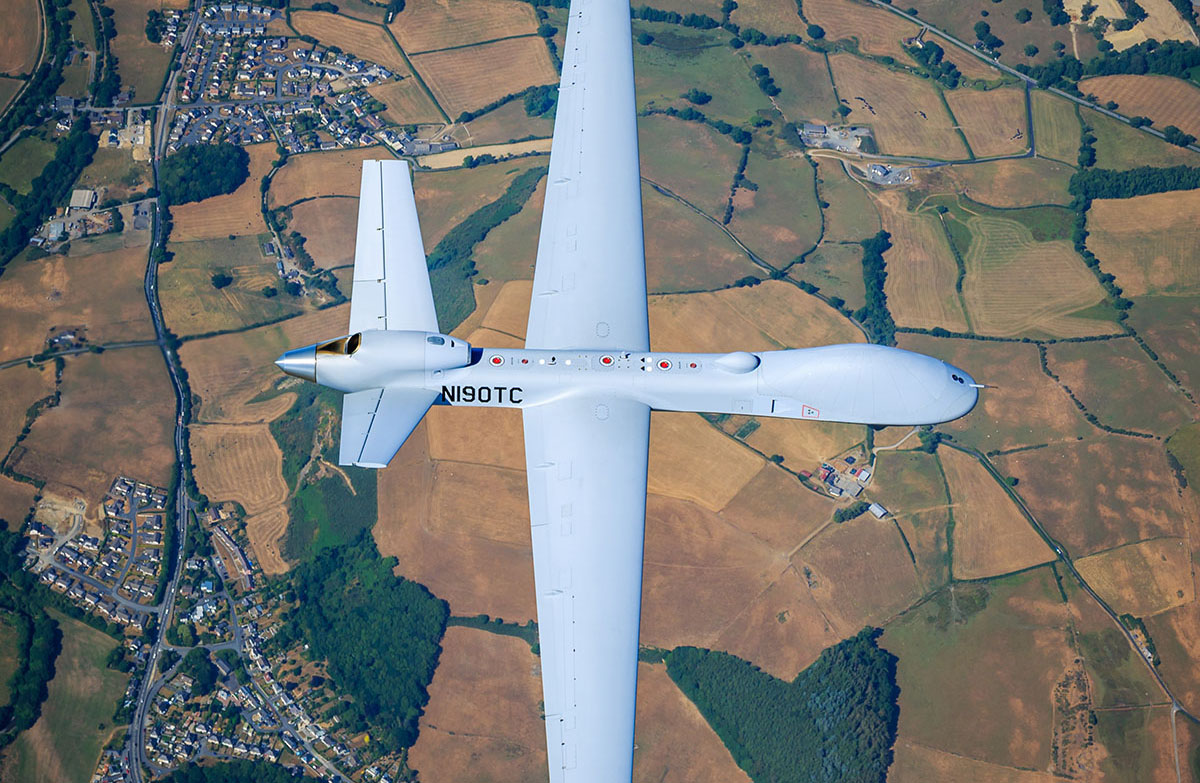As further proof of NASA's continued efforts to work with industry in order to accelerate the integration and safety of commercial unmanned aircraft systems into the national airspace, the agency announced an agreement with General Atomics (GA) to demonstrate a flight mission of an MQ-9B SkyGuardian remotely piloted aircraft (RPA). This cooperative agreement will showcase the potential of the aircraft to support multiple commercial applications of drone technology with the use of onboard and virtual sensors.
General Atomics Aeronautical Systems Inc. signed the cooperative agreement with NASA in order
The team completed the Critical Design Review in September. Key enabling technologies that will be demonstrated include Detect and Avoid (DAA) and Command and Control (C2) datalink systems, which are aligned with recently-published RTCA standards. Additionally, General Atomics and NASA will fly a SkyGuardian to conduct public infrastructure surveys over the city of San Diego as part of the UAS Integration Pilot Program (IPP). The highlight of the flight will be to perform public infrastructure surveys above the city. The City’s UAS IPP team will connect GA-ASI with local customers of the survey opportunities that this portion of the demo will offer.
As part of the upcoming demonstration, GA-ASI’s MQ-9B SkyGuardian RPA will exhibit its ability to provide a wide variety of commercial and public services using onboard sensors and additional ‘virtual sensors’ that it could carry in the future. Services include inspections of hundreds of miles of rail, energy pipeline, powerline
“NASA and GA-ASI have a shared goal of seeing UAS fly safely and unencumbered in the NAS,” said Linden Blue, CEO, GA-ASI. “GA-ASI has worked with NASA for more than five years on this goal and we’re excited to participate in their next set of demonstrations.”
Flight tests on NASA's Ikhana, a trademarked Predator B/MQ-9 UAS produced by GA-ASI, served as the basis for verification and validation of the RTCA DO-365 and DO-366 technical standards for DAA, which were published by RTCA in May 2017. This has put GA-ASI on a path toward leading the industry in producing Medium-altitude, Long-endurance (MALE) UAS that are approved to fly in the NAS.
In June 2018, GA-ASI’s DAA system was the key technology that enabled NASA to fly the Ikhana for 2.5 hours through the NAS, taking off from Southern California and flying through multiple airspace classes at various altitudes and requiring communications with several air traffic control centers. The DAA system installed on Ikhana enabled the UAS to meet the intent of the FAA’s 14 CFR 91.113(b) requirement to “see and avoid” other aircraft, allowing a large UAS to fly without a chase plane for the first time in certain classes of airspace.
According to NASA, the agency initiated the Systems Integration and Operationalization (SIO) project that will result in multiple flight demonstrations focusing on different types of UAS and their flight missions. GA-ASI’s demonstrations will conduct commercial missions above 10,000 feet. NASA’s SIO includes two other partnerships demonstrating small/medium-sized UAS at lower altitudes. GA-ASI’s technology partners for the SIO demonstration include Honeywell (supplies the TCAS II for the DAA system), and Collins Aerospace for the Command and Non-Payload Communications (CNPC) datalink radios, which is part of the C2.
These types of agreements are essential not only in the development of drone technology but also for the future of the airspace. The more industry, government and academia collaborate to conduct these types of joint tests, the faster we'll have a safe and integrated combination of manned and unmanned aircraft in the NAS.















Comments